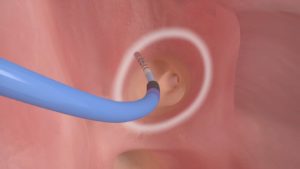
Procedure-related complications and mortality rates associated with catheter ablation of atrial fibrillation (AF) are low and have declined in the past decade, conclude the authors of a systematic review and pooled analysis, published in the Journal of the American College of Cardiology (JACC).
Karim Benali (Université de Montréal, Montreal, Canada) et al set out to determine the rate of procedure-related complications associated with catheter ablation of AF using randomised controlled trial (RCT) data to assess temporal trends.
The researchers searched the MEDLINE and EMBASE databases from January 2013 to September 2022 for RCTs that included patients undergoing a first ablation procedure of AF using either radiofrequency or cryoballoon ablation.
In total, 89 studies met the inclusion criteria, with 15,701 patients included in the analysis.
Investigators report that overall and severe procedure-related complication rates were 4.51% (95% confidence interval [CI]: 3.76%–5.32%) and 2.44% (95% CI: 1.98%–2.93%), respectively. Vascular complications were the most frequent type of complication (1.31%), followed by pericardial effusion/tamponade (0.78%) and stroke/transient ischaemic attack (0.17%).
Additionally, the investigators note that the procedure-related complication rate during the most recent five-year period of publication was significantly lower than during the earlier five-year period (3.77% vs 5.31%; p=0.043). The pooled mortality rate was stable over the two time periods (0.06% vs 0.05%; p=0.892). There was no significant difference in
complication rate according to pattern of AF, ablation modality, or ablation strategies beyond pulmonary vein isolation.
“Periprocedural complication rates and mortality associated with a first catheter ablation procedure for AF are low,” the authors write in their concluding remarks. “A significant improvement in the safety profile of the procedure was observed over the last five years. Neither the type of energy used for ablation nor the creation of additional lesions on top of PVI [pulsed vein isolation] significantly influenced the procedural complication rate.”











